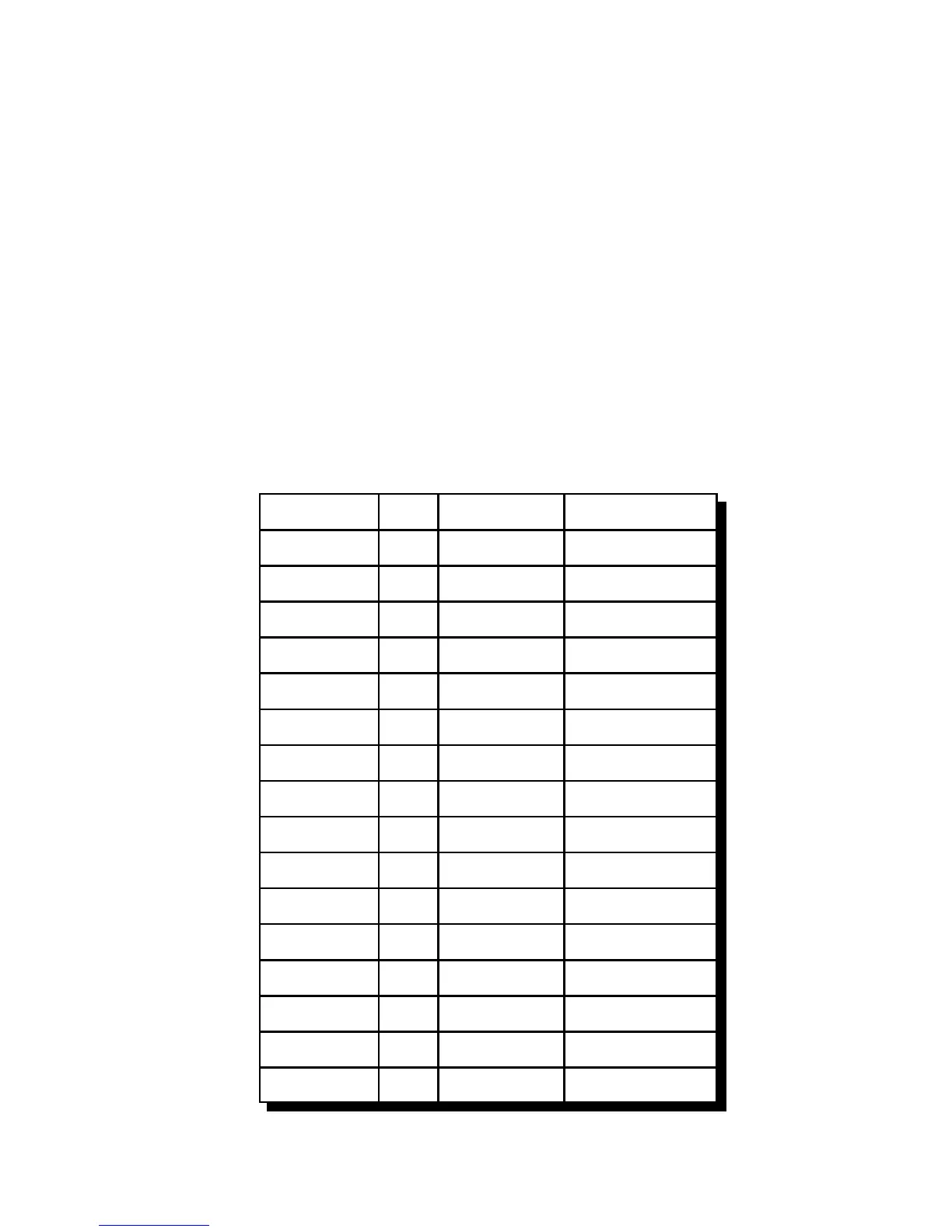15-8
Version 1.73 Copyright © 1997 Link Communications Inc. 1/18/97
bb = 0..15 which band. See table on the following page. You don't have to leave the
bands as they default if you want to re-assign them some other way. If two
bands overlap, the first one found that contains the current frequency will be
used.
u = 0 for lower edge, 1 for upper edge. If you try to set the upper edge to a lower
frequency than the lower edge, the lower edge will be set to match it. If you
try to set the lower edge to a higher frequency than the upper edge, the upper
edge will be set to match it.
f..f*f..f = the new frequency. The '*' should go between the 1MHz digit and the
100KHz digit of the frequency. Example "14*25" for 14.25MHz.
Frequencies over 2GHz have not been tested.
Defaults:
The following table shows the defaults for both the transmit and scan edges (they can be
set separately). These are the edges of the voice bands for the amateur extra class. Note that
voice is not allowed on 30 meters. There is also a user defined band at the end that you can set
for any other frequency range.
Band bb Lower Edge Upper Edge
160 meters 0 1.8 Mhz 2.0 Mhz
80 meters 1 3.75 Mhz 4.0 Mhz
40 meters 2 7.15 Mhz 7.3 Mhz
30 meters 3 0.0 Mhz 0.0 Mhz
20 meters 4 14.15 Mhz 14.35 Mhz
17 meters 5 18.11 Mhz 18.168 Mhz
15 meters 6 21.2 Mhz 21.45 Mhz
12 meters 7 24.93 Mhz 24.99 Mhz
10 meters 8 28.3 Mhz 29.7 Mhz
6 meters 9 50.1 Mhz 54.0 Mhz
2 meters 10 144.1 Mhz 148 Mhz
1.25 meters 11 222.0 Mhz 225.0 Mhz
70 cm 12 420.0 Mhz 450.0 Mhz
33 cm 13 902.0 Mhz 928.0 Mhz
23 cm 14 1240.0 Mhz 1300.0 Mhz
user defined 15 0.0 Mhz 0.0 Mhz
